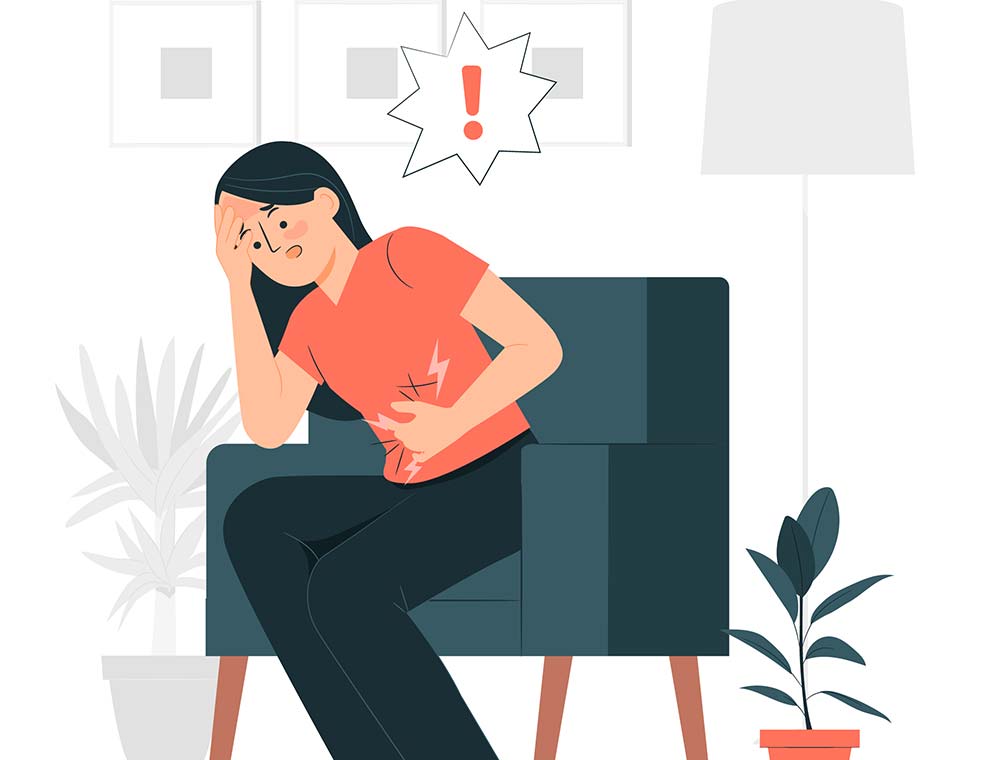A monthly pain!

Menstrual pain is an extremely common symptom of menstruation, usually in the form of mild abdominal and back pain. However, the menstrual pain can sometimes be so severe that it interferes with day-to-day life. This is not normal, and should be investigated further to find out if there is an underlying cause.
A common cause of severe menstrual pain is endometriosis, affecting about 10% of all women and girls worldwide. This is a condition where tissue similar to that lining the uterus grows outside the uterus on other areas of the reproductive system such as the fallopian tubes, the ovaries, and other organs of the body. Scars eventually develop at these sites and can cause blocks. Endometriosis can severely affect the quality of lives of those affected by it; preventing girls and women from going to school and work, straining relationships and causing significant psychological stress.
There is no definitive answer as to what causes endometriosis, but genetic and hormonal factors are thought to play a role. One theory is also that there may be backflow of menstrual blood through the fallopian tubes and this blood flowing back may get deposited outside the uterus.
In addition to severe menstrual pain, endometriosis can present with other symptoms such as:
- Pain during sexual intercourse
- Heavy bleeding during periods
- Pain on bowel movements and when urinating
- Bleeding during bowel movements and when urinating
- Abdominal pain, even when not menstruating
- Depression
- Anxiety
- Always feeling tired
- Nausea
- Bloating
- Subfertility
As endometriosis does not cause many physical signs, it is challenging to diagnose and some women can go undiagnosed for up to 7 years. It is therefore important to seek medical advice early if experiencing any of the symptoms mentioned above.
The best and only way to diagnose the condition is by key-hole surgery, using a camera to directly see patches of endometriosis on the inside of the body. No blood tests can accurately diagnose endometriosis, but ultrasound scans can help support a diagnosis of endometriosis. However, a normal ultrasound scan does not mean that endometriosis is not present.
There is currently no cure for endometriosis or a way to prevent it from developing, but a number of treatment options exist to treat symptoms and improve fertility chances. Treatments are decided on an individual basis.
Medications include painkillers and those to reduce inflammation, as well as hormonal medication such as the oral contraceptive pill, contraceptive injection, the hormonal intrauterine contraceptive devices and contraceptive implants. However, if wanting to get pregnant, surgery may be required to remove the patches of endometriosis. Additional fertility therapies such as IVF (invitro fertilization) and IUI (intrauterine insemination) may also be required to conceive.
The progress of endometriosis is different for everyone – about 1/3rd of cases improves over time, 1/3rd remains the same throughout and the remaining 1/3rd of cases can progressively get worse. Symptoms may settle and improve once a woman stops menstruating at menopause, but this does not happen for all those with endometriosis.
It is therefore important to take menstrual pain seriously, and if it does interrupt with day to day activities, please speak to a medical doctor.
.png)


